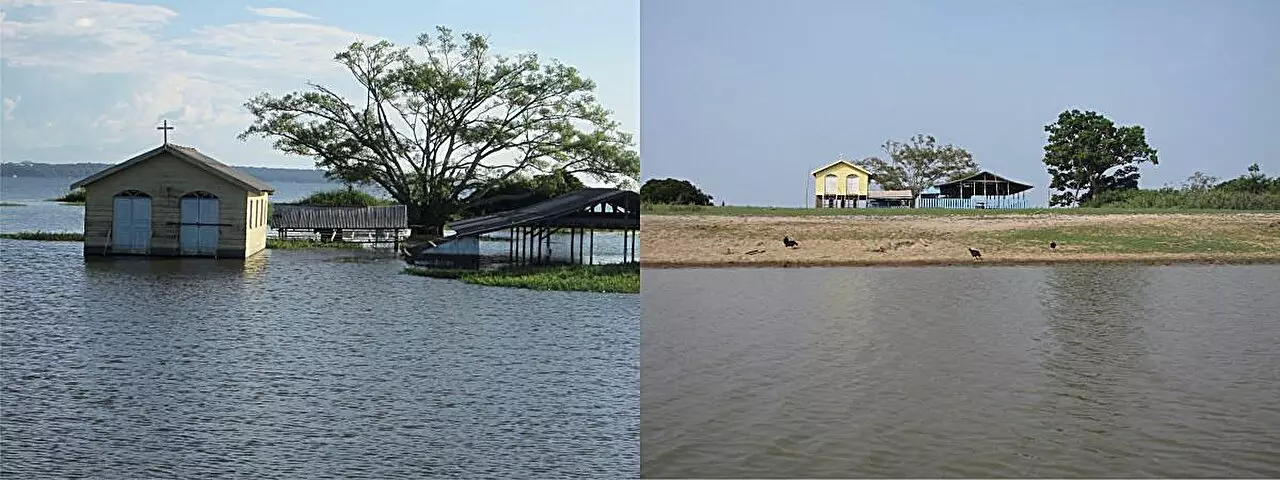The Amazon Rainforest, often referred to as the lungs of the planet, is a complex ecosystem that plays a pivotal role in global climate regulation. A recent study conducted by researchers at the University of São Paulo (USP) unveils alarming insights into how the impending changes in climate can drastically affect methane emissions in this critical biome. As temperatures rise and patterns of rainfall evolve, the delicate balance within this ecosystem may favor the proliferation of methane-producing microorganisms, leading to increased greenhouse gas emissions that can have far-reaching global consequences.
Under normal circumstances, approximately 20% of the Amazon’s expansive area—over 800,000 square kilometers—remains inundated with water for more than half the year due to consistent rains and river floods. In these flooded zones, microbial communities thrive by decomposing organic matter, resulting in significant methane production. Alarmingly, recent data reveals that these floodplains contribute nearly 29% of the global methane emissions from wetlands, which is a considerable figure considering the overall context of climate change and the increasing focus on reducing greenhouse gas emissions.
In stark contrast, the Amazon’s upland forests act as crucial methane sinks, capturing this potent greenhouse gas from the atmosphere and holding it in check. However, the study highlights a critical vulnerability; these upland areas appear more sensitive to climate change than their floodplain counterparts. While microbial activity in floodplains shows resilience to fluctuations in temperature and humidity, the upland forest microbiomes exhibit a drastic reduction in methane consumption—up to 70%—under hotter and drier conditions.
This imbalance represents a troubling prospect. As methane emissions from floodplains potentially increase, the ability of upland forests to mitigate these emissions considerably diminishes, threatening the overall stability of the region’s greenhouse gas dynamics. Júlia Brandão Gontijo, the principal author of the study, expressed significant concern over the future consequences this will have, particularly given the Amazon’s critical role in regulating the global climate.
Research Methodology
The study utilized a comprehensive approach, combining field sample collection and advanced genetic analysis techniques to examine microbial communities within different ecosystems of the Amazon. Researchers alongside Gontijo from institutions such as Stanford University and the Netherlands Institute of Ecology conducted a meticulous 30-day experiment focusing on two floodplain and one upland forest site in the municipalities of Santarém and Belterra. They meticulously manipulated temperature and humidity levels to simulate extreme climate conditions.
Researchers identified and measured the relative populations of methanogenic and methanotrophic microorganisms—microbes that produce and consume methane, respectively. While methane production rates were somewhat stable across conditions in the floodplains, a notable increase in active methane producers hinted at a future crisis. This suggests that as climate extremes become the new norm, flooded areas may become even more efficient methane producers, exacerbating the greenhouse gas problem.
As research in this domain progresses, the implications of Gontijo’s study become increasingly urgent. The potential for unchecked methane emissions from the Amazon basin could significantly amplify global warming trends. The study outlines the pressing need for targeted conservation and management policies aimed at preserving the delicate balance between methanogenesis and methane consumption.
The research further emphasizes the necessity of understanding microbial dynamics in response to climate change, hinting at the need for laboratory experiments and field trials designed to explore the interactions within these microbial communities thoroughly. Identifying methanotrophic microorganisms that can function as biological mitigators of methane emissions could provide new strategies for managing greenhouse gas outputs.
Ultimately, the study serves as a clarion call for proactive environmental policy and sustainable management practices in the Amazon. The alarming future projections for methane dynamics in this pivotal rainforest underscore the unstoppable connection between climate change and ecological stability. As the research community digs deeper into the mechanisms of microbial methane cycling, it is paramount that findings are translated into actionable policies that mitigate climate impacts and preserve this irreplaceable ecosystem for generations to come.
In a world grappling with climate change, understanding and addressing methane emissions from vulnerable ecosystems is not just an academic exercise; it is a crucial component of global climate strategies designed to combat the existential threat of climate change. As we forge ahead, the lessons derived from the Amazon will undoubtedly shape our responses to these pressing environmental challenges.

